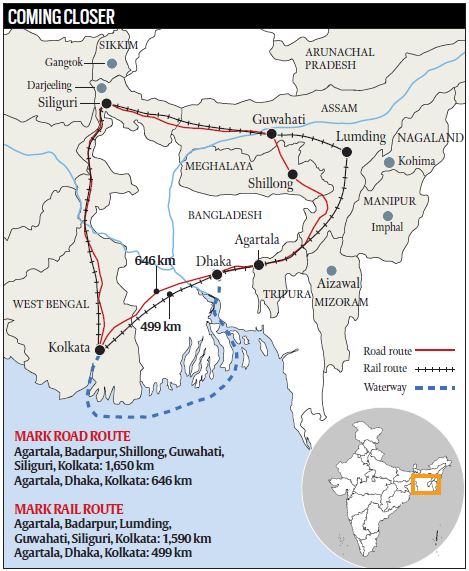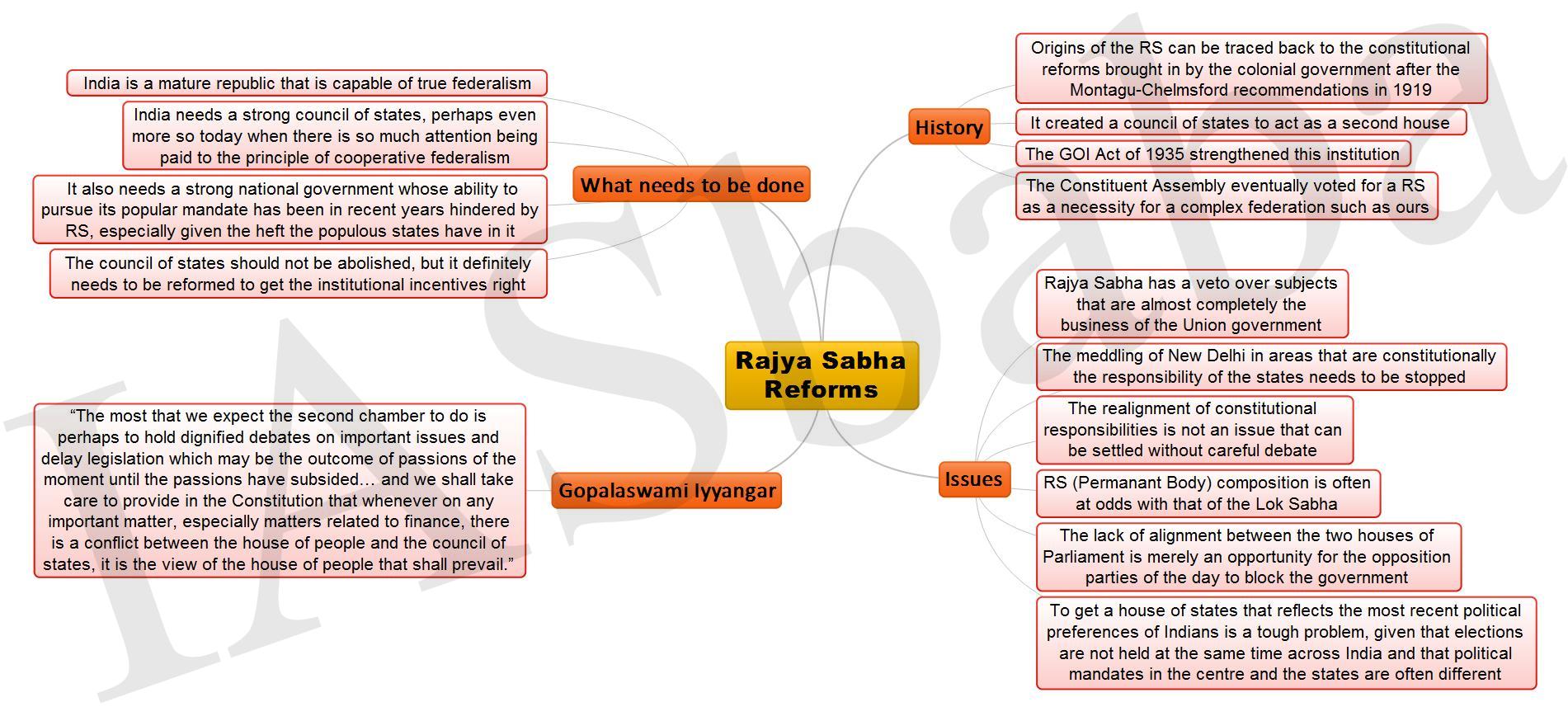Archives
IASbaba’s Daily Current Affairs – 8th December, 2015
ECONOMICSTOPIC:
- General Studies 3: Economics of animal-rearing; Indian Economy and issues and employment; agricultural produce issues and related constraints
Animal husbandry and Indian Economy
- Vast shrinkage of grazing lands and rapid deterioration in their vegetative cover are matters of worry considering that animal husbandry constitutes a substantial proportion of livelihood for small and marginal farmers and landless people.
- Most developmental plans and policies for the livestock sector have focused primarily on promoting fodder cultivation for stall-fed cattle like maize etc.
- Hardly any attention has been paid to the protection and upgrade of pastures and grasslands on which the bulk of the country's animal population subsists.
A statistical outlook:
- According to the 19th livestock census conducted in 2012, the country has over 512 million animals of economic importance such as cattle, buffalo, sheep, goat, pig, equine, camel, mithun and yak.
- However, no reliable data is available for the pastures and grazing lands.
- Rough, unverified estimates indicate that such lands have dwindled from about 70 million hectares at the time of Independence to a mere 12 million hectares now.
Deterioration in quality:
- Most of the Pasteur lands are highly degraded with very low capacity to support animals.
- Fodder available in these areas is generally poor in quality and is, therefore, unable to provide the needed energy, protein and minerals to the productive animals.
- The area devoted to growing fodder, too, is meagre - less than five per cent of the total arable land.
- Expansion in this land is neither feasible nor desirable in a country where land is scarce and its demand for agriculture, infrastructure, housing, industries and other uses huge.
- Proper upkeep of the available pastures and improvement in their productivity is therefore indispensable.
Government apathy:
- The 23rd International Grassland Congress held in New Delhi last month (November, 2015) discussed the plight of grazing lands along with other critical issues concerning grasslands.
- One of the major reasons for the poor condition of the pastures is that they do not belong to any particular agency or government department for their maintenance.
- Even where the forest or revenue departments claim the ownership of such community lands, they evade responsibility for their management.
Lack of comprehensive national policy:
- Although India has a national policy for almost every conceivable sector, none exists for the grasslands.
- The old and abandoned Forest Policy of 1894 had laid down some guidelines for grazing but these are applied only to the protected forests.
- The Forest Policy of 1954 generally sought to restrict the use of forest lands for grazing and allowed it only under special circumstances where it was not deemed harmful to the health of the forests.
- More or less the same position was maintained in the National Forest Policy of 1988 although it supported the concept of community's involvement in regulating grazing on the forest lands.
- But non-forest lands, including village common lands, used traditionally for grazing, are not covered in any policy formulated by the Centre or states so far.
Way ahead:
- Since land is essentially a state subject (entry 18) under the Constitution, the major onus of action lies with the states.
- At least the states having sizeable proportion of the population depending on common grazing lands-based animal husbandry should come forward to initiate programmes for the improvement of grazing lands.
- Otherwise, not only will the livelihood of millions of people be compromised but also the agriculture sector's gross domestic product (farm GDP) might suffer, as nearly 30 per cent of agricultural GDP comes from the livestock sector.
Connecting the dots:
- Critically evaluate the importance of livestock in Indian agricultural system.
- Critically examine the changing trend in livestock population observed in the 19th livestock census 2012.
- Write a note on extent of dependence of Indian agricultural economy on livestock.
INTERNATIONAL
TOPIC: General Studies 2
- India and its neighborhood- relations.
- Bilateral, regional and global groupings and agreements involving India and/or affecting India’s interests.
- Effect of policies and politics of developed and developing countries on India’s interests, Indian diaspora.
India-Bangladesh: Through Bangladesh, a development shortcut for Northeast India
Issue- Recently a cargo vehicle carrying a car and some goods made the first successful trial run from Kolkata to Agartala through Bangladesh, reviving a route shut since Independence, and cutting the travel distance by a thousand kilometres.
The author talks about how establishing connectivity with the help of Bangladesh helps in development of north east.
Why the issue is significant?
- Last year PM signed a historic land boundary agreement with Bangladesh that will solve all outstanding boundary disputes between two nations.
- Following this resolution of India's border dispute with Bangladesh, connectivity with the north-east is set to become easier opening new vistas in Indo-Bangladesh relations and an opportunity to connect with north east India
A brief about relations between India and Bangladesh
- India has extended a line of credit of US$ 800 million to Bangladesh for a range of projects, including railway infrastructure, supply of Broad Gauge microprocessor-based locomotives and passenger coaches, procurement of buses, and dredging projects. US$ 150 million out of the US$ 200 million grant has already been released to Bangladesh in three instalments for utilization in projects of priority to Bangladesh.
- The proposed BCIM (Bangladesh-China-India-Myanmar) economic corridor will pass through northeast India after originating in Kolkata and passing through Bangladesh before it enters Myanmar and finally China's Yunnan province is an added Philip to existing relations between two nations
- This regional corridor is felt to be a game-changer for the economy of all four countries. The most important thing about solving the Bangladesh border dispute, which is to the benefit of India, is that, now we have overcome the difficulties to connect with the north-east.
Lack of development in north east has been attributed to lack of connectivity With the recent signing of BBIN (Bangladesh,Bhutan,India,Nepal) motor vehicle agreement by transport ministers of respective countries for the Regulation of Passenger, Personnel and Cargo Vehicular Traffic among their countries, the situation of connectivity is bound to improve
Why connectivity is important?
- The “abundance” of natural resources in India’s north-east region has “huge economic potentials that remained to be tapped
- North east people are deprived of fruits of development even after six decades of independence and also there is a feeling of alienation among them To reduce the present alienation of people and to enhance effort to bring them to mainstream is the need of hour

Issues and prospects of rail-road connectivity
- Gauge conversion of railways which is being done priority-wise in Bangladesh, demands intense labour and capital. The same applies to laying tracks for a proposed second Maitrayee Express from Khulna to Benapole.
- The poor condition of roads in Bangladesh is a cause of concern for India and hampers the growth of bilateral trade.
- The Motor Vehicles Agreement, signed at the 2014 SAARC Summit, prescribes that country in the region iron out their respective issues in this regard.
- Ongoing unrest in India’s north-eastern regions also acts a hindrance to development projects.
- Various individuals and agencies need to be paid for allowing any kind of work to begin, raising the expenses.
Issues and challenges of waterways
- Necessity of Dredging-Promoting this protocol route requires the regular dredging of the rivers. (For instance, the Kolkata Port is an inland port and thus requires constant dredging year-round; the same applies to the Kusiyara-Barak Rivers).
- Lack of Assured Freeways-Assured fairway with desired depth and width is the key to year-round operation. Unsafe and uncertain fairways restrict speed and have been found to cause frequent groundings that, in turn, result in higher fuel costs: the system then becomes expensive and unreliable.
- Lack of Round-the-clock Navigation Facilities-The provision of night navigation facility is essential for 24-hour navigation. This has been provided by the Inland Waterways Authority of India between Dhubri and Pandu on NW-2.Night navigation is an option rarely taken by Indian vessels plying Bangladeshi routes.
IAS baba’s Views:
- Enhancing bilateral relations between India and Bangladesh promises to provide exponential benefits for both countries.
- For India, in particular, transit and transhipment across Bangladesh is important as it is expected to boost the economy of India’s Northeast.
- Developments in connectivity hold a well of promise for transforming India’s eastern and north-eastern states, including the city of Kolkata in West Bengal.
Connecting the dots:
- Critically analyse the impact of recently concluded BBIN motor vehicle agreement
- Discuss some of the outstanding issues in connectivity between India and Bangladesh
MUST READ
Amber signal on Delhi pollution
How rational is Delhi’s road rationing?
Kerala’s antisocial network
Right step forward
Modi government does well to resume talks with Pakistan. Now it must stay the course, make the process less vulnerable.
DBT, RuPay critical for 'meaningful' financial inclusion- Technology will play a big role in fostering greater engagement of the hitherto excluded with the financial system
Inefficiencies in claim settlements- ROHINI will help avoid duplication since every hospital will have one unique identity number
Revisiting innovation at the bottom of the pyramid- How do you come up with disruptive differentiators that will serve the unique needs of millions of Indians with limited purchasing power, and who are difficult to access? Co-create and build ground-up
MIND MAPS
1) Time to rethink the role of the Rajya Sabha Live Mint 2) An Odd Policy- Delhi government’s odd-even vehicle decision needs to be rethought.
Indian Express
2) An Odd Policy- Delhi government’s odd-even vehicle decision needs to be rethought.
Indian Express

